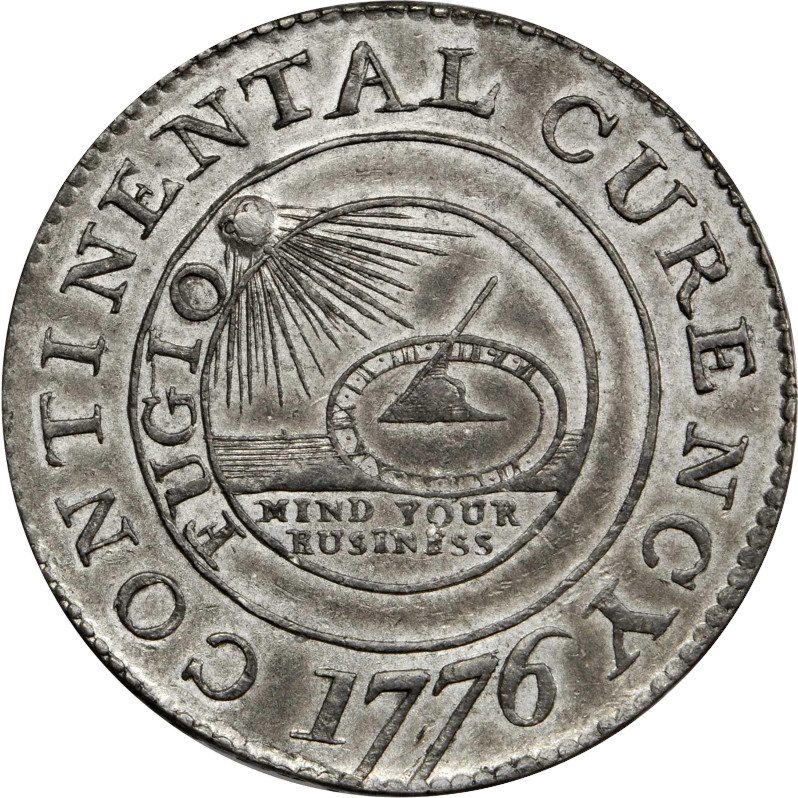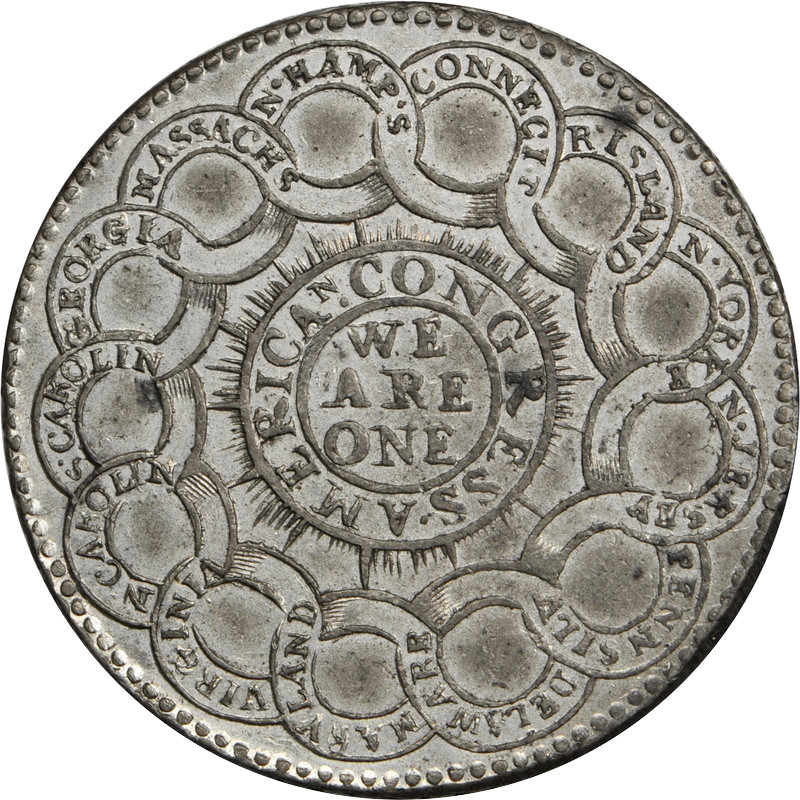Earlier this year, Early American coin collectors were surprised to hear a new theory about Continental Currency: that they were not American-made speculative patterns, but rather satirical pieces made in England.
It’s still a widely debated topic.
What hasn’t changed at all is their attraction to collectors of early American coins.

In October, a couple of PCGS MS62+ pieces came to auction through Stack’s Bowers. One was a Newman 1-C, the other was a Newman 2-C. They both brought strong (if not top) dollar. They were both out of the Archangel Collection.

Let’s look at the 1-C. This exact coin sold in 1976 for $12,500. It’s got a lot of eye appeal for a 62, as described by the plus grade. A lot of Continental Dollars suffer from issues, some from their striking and some from the nature of their pewter make-up. In the late 1980s, a Norweb piece sold for $13,500. But by the early 2000s, they were trading for about twice that. And in a huge boom, by the end of the 2000s they were trading for easily twice that again. And in 2014, a Mint State 62 piece sold for a high water mark of $94,000.
So would McArthy’s assertion that these pieces were made in England, rather than as American-made patterns for the nascent United States impact the value of these interesting things to collectors? Well, this piece sold in October for $90,000.
The other piece, a Newman 2-C, sold in April of 1976 for $5,000. It sold at the same Stack’s Bowers auction in October 2018 for just under $60,000.
These are not the finest-known of each type. Not by a long shot.
The sophistication and knowledge that the Internet brings to collectors new and old is certainly a difference compared to 1976.
And, looking at some other Early American coinage shows that these Continental Dollars have a relatively strong track-record. A Fugio Cent (something like these Fugio Dollars we’re discussing up to now) sold in June of 1975 for $4,250. The same piece, now carrying the grade Mint State 66 Red-Brown (and it’s barely red-brown, but still neat to see!) sold for $38,400. A Vermontensium sold in August of 1976 for $4,250 and recently sold for $84,000.
Now, certainly populations have played a part in these changing trajectories. But that Mint State 66 Red-Brown United States, 4-Cinquefoil coin is certainly among the most eye-appealing and finest of all of the Fugio Cents, if not the rarest. (There’s no question it’s conditionally rare.)
The Vermontensium is not the most beautiful piece, but then again, none of them are. It is nice.
Continental “Dollars” have enjoyed a steady climb in value with increasing interest in all conditions. And it seems their questioned country of origin has not impeded that upward vector, especially considering the overall numismatic market.
